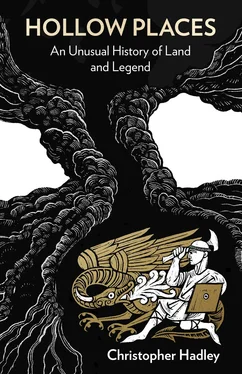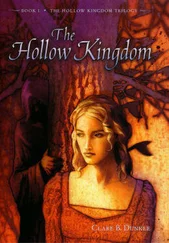Walter Rosegives us clues as to what would be going through a carpenter’s mind as he stood in front of the tree, writing that when his father looked at trees he saw what could be made of them: ‘In a stumpy butt, with large branches spreading off not far from the base, he would see four large gate posts, the spread of the branches to form the portion that would go into the ground.’ Another would be large enough to split down the centre and quarter-up for coffin boards, or for rails or the slats of a field gate. He might have been calculating how much useful timber was in the Pelham yew. How much marquetry. How many writing slopes or clock cases were latent in the bole. More likely, Lawrence was counting how many poles could be sold to bodgers for the bows and hoops of the Windsor chairs made in vast quantities back then, with the very best given backs of yew.
‘A post of yew will outlasta post of iron,’ noted one naturalist in the 1830s. The Furneux Pelham Smock millwas modernised in those years, perhaps the year the tree came down, after James Seabrook the Younger bought the mill from his father and paid off the mortgage on it. Yew was excellent wood for cogs and pins, and its branches would yield fine barrel hoops for the fledgling brewing enterprise at Furneux Pelham Hall. The wood’s waterproof qualities made it a favourite for buckets and palings. It had other uses besides, known to country folk: lengths of it were traditionally used for dowsing. It was also said that if you held a switch of yew in your hand while cursing your enemy they would not hear you.
No doubt some wanted the old tree down not because they valued its timber but simply because they did not want it in the landscape. They wanted it down, just as the doctor wanted rid of the elm in Hardy’s The Woodlanders , because it oppressed Marty South’s father as he lay on his deathbed. It is finally felled – by dead of night, but ‘Little good it did poor old South, who was dead the next day from the shock of the tree’s disappearance.’
The agricultural improvers detested the space taken up, and even the shadows cast, by hedgerow trees. Surprisingly to us, even those who loved the landscape may have wanted the old yew gone. Pollards, which often marked the boundaries of fields, were seen as ugly and had been under attack since the late eighteenth century – an old yew might be viewed with similar disdain by some. ‘Not only were outgrown hedges tamed and excess trees removed. In many places hedges were grubbed out altogether … The grubbing of hedges was especially common in the high farming period after c.1830,’ writes the historian of the East Anglian landscape Tom Williamson. Our tree was probably in the way of planting, or blocked a new drainage ditch. The Ancient Tree Forumpublish a pamphlet for farmers on how to care for ancient and veteran trees. It contains a terrible map showing all the hedgerow trees that have disappeared from a single fifty-acre parcel in North Yorkshire since the middle of the nineteenth century, each standing tree a little green icon representing a surviving pollard or standard ash, beech, oak or sycamore. There are some fifty of them, but they are outnumbered nearly three to one by a mass of red ‘X’s in a circle representing a lost tree.
Little Pepsells was listed as pasture in 1837, and while it is unlikely that an old yew would ever drop enough leaves to poison stock, horses tied to yews have been known to die from grazing on them. Might the squire or his tenant farmer have taken a disliking to the tree for some such reason, or did they just need to invent winter work for men sent to them under the old Poor Laws? Remember that according to the Hammonds, ‘degrading and repulsive work was invented for those whom the farmer would not or could not employ’.
What we do know is that this was not the only yew that disappeared from the landscape in the early nineteenth century.
In 1848 one archaeological journal lamentedthat yews were ‘so reduced in number as to seem like the last of a once flourishing and noble race, mourning in their own decay over the magnificence of the past, and the desolation of the present’. In 1539, John Lelandhad counted thirty-nine yews at Strata Florida in Wales; they are the only ones he mentions in his famous itinerary around the British Isles. Three hundred years later, only three of the famous yews were still standing. There is an engraving and article from Gardener’s Chronicle in May 1874 with a description of the largest tree that is not unlike that of the Pelham yew in Wigram’s letter: it ‘was divided into two parts, leaving a passage through it, this was 22 ft in girth’. Beneath one of the three survivors was the traditional resting place of the fourteenth-century Welsh poet Dafydd ap Gwilym. It too disappeared after 1874, possibly during an archaeological dig of the Cistercian abbey at the end of the nineteenth century.
It is loathsome to think that our tree was felled indifferently, because it was in the way, or to give unemployed labourers something to do to earn their gallon loaf, but whatever their reason, it had to come down. On their return from breakfast, the sight that greeted them must have been something of a surprise. Was their approach a cautious one? Where they had wrestled with the tree half an hour before, there was now a large hole, a cavern even, and the tree had fallen into it. ‘When they came back, that yew Tree had fallen down of itself; and when they looked, there was a girt hole right underneath it, underneath its roots, a girt cave like.’ This in the words of the rustic voice Wigram used in his final account to W. B. Gerish. His 1888 letter to the Hertfordshire Observer is less picturesque but more dramatic: ‘On his return [he] found that the old tree had fallen, collapsing into a large cavity underneath its roots.’
Until I read about grub felling, I simply could not understand how a half-felled tree had fallen into a hole, but if most of the roots had been severed and there was a cavity under the yew, it would have been suspended by a few stubborn roots that eventually surrendered their charge to the hollow in the earth. After visiting several ancient yews, I could believe that one might collapse in on itself. The weight distribution is uneven as the heart rots away leaving heavy outer trunks and branches, twisted and over-balanced as the branches trail along the ground. The roots, severed and weakened as they would have been by the men’s exertions, must have given way while they were at breakfast. At least that’s the explanation needed to understand the 1888 version in which the tree falls into a large hole. The later version could be interpreted differently: the tree simply fell over and left a large cavity where the roots had been, but surely these countrymen were used to the holes left by trees that came down in this way, and would not need a supernatural explanation for the cavity.
‘It’s not unknown for voids to develop under very old trees,’ wrote Wigram. It is certainly true that a cavern, or at least a hole, could have formed in the chalk under the shallow clay where the tree grew – it is not unusual for sink holes to form from erosion where the bedrock is limestone – and the weight of a tree no longer held steady by its roots could have brought in the ceiling of the cavity. It is not the only Pelham story of a cavity opening up in the chalk. Less than a mile to the east, on the other side of the Ash Valley, there is a tale recorded in the 1930s that the first church in the Pelhams was destroyed by Vikings or Pharisees(the local word for fairies) or, more prosaically, it collapsed into a hole that opened up beneath it.
She was down. ‘It is done,’ wrote Rider Haggardof another tree in another place.
A change has come over the landscape; the space that for generations has been filled with leafy branches is now white and empty air. I know of no more melancholy sight – indeed, to this day I detest seeing a tree felled; it always reminds me of the sudden and violent death of a man. I fancy it must be the age of timbers that inspires us with this respect and sympathy, which we do not feel for a sapling or a flower.
Читать дальше












